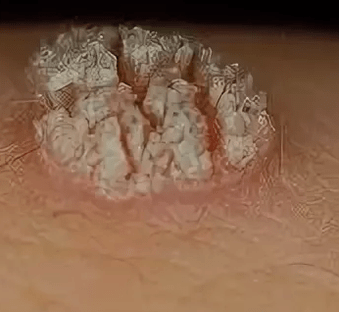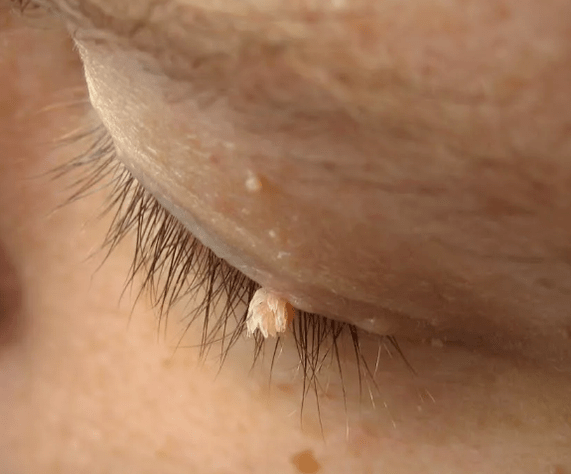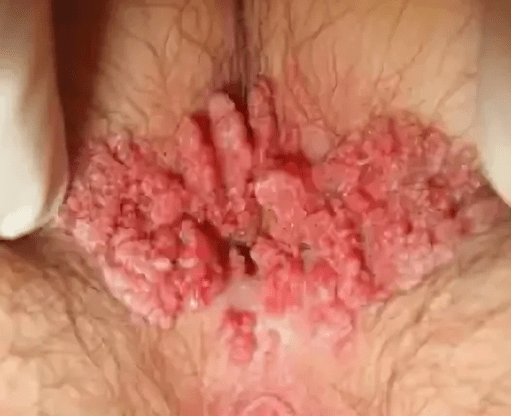Papilloma is a benign neoplasm caused by HPV (human papillomavirus) and arising on various parts of the body: under mice, on the vocal cords, on the genitals, on the eyelids, neck, in the bladder, on the mucous nose and mouth.

TOP-5 terrible facts that you should know about HPV
- Scientists have discovered more than 190 types of HPV. Of these, at least 13 types are the cause of cancer tumors.
- In 2011, Australia scientists conducted a study, after which they established the connection of breast cancer with HPV.
- Cervical cancer (or RSM) in 100% of cases occurs on the basis of HPV exposure.
- By the end of 2013, vaccination against HPV was introduced in 55 countries.
- Today, there are no drugs and methods that would remove the virus from the body 100%.
What is this talking about? At least about the fact that HPV is not harmless growths that appear on the skin. If you have a lot of papillomas, we recommend that you undergo special examinations and be attentive to well -being.
Varieties of papillomas. Just about more than 190 types
Cover and describe all types is difficult. Therefore, in the article we have collected the most common.
- Simple (ordinary, vulgar). They appear as a round papule the size of a pin head, as they grow, they acquire a rough surface. Often, 1 wart appears first, and others arise around it over time, over the years there are more and more. This type of warts appears on the palms, between the fingers and legs, on the feet and soles, on the forehead, in the lips and chin. The treatment is quite complicated.
- Film (acrochordus). They are caused by 2 and 7 types of virus, arise on eyelids, under the mammary glands, on the neck, in the inguinal region and others. Are the most common, found in women and men. At the first stage, a seal of a yellowish tint appears, after 1-4 weeks it stretches. Acrochordus can have an elongated or round shape, almost always seemed to "hang" on a thin leg. In most cases, people with weakened immunity occur, as well as in those older than 40 years.
- Flat. Are located in groups in different parts of the body: around the anus, on the genitals, on the face, on the back; Often flat papillomas are found on the cervix and on the surface of other organs. The appearance resembles warts or large convex moles; growths have brown, sand or dark brown shades; "Rise" under the surface of the skin by about 0. 5-2. 5 mm.
- Sharp condylomas. Separate growths have an acute-ended shape and a pinkish tint. Most often, condylomas are "united" into one large growth, which in appearance resembles a crest of a cock or a turkey nose. Sharp condylomas are transmitted only sexually, therefore are often located on the cervix, the mucous membrane of the genitals, on the penis, in the urethra and in other areas. The danger of condils lies in their destructive character and instant distribution.

Causes. How, where and why do they appear?
The natural reason for the appearance of unpleasant warts and growths is HPV (aka human papillomavirus). The prevalence of virus carriers in the human population exceeds 60 %. This means that almost every second one is a potential carrier of the virus.
The methods of spreading the virus are as follows:
- Sexual. The virus is transmitted through sexual intercourse, pointed condylomas appear on the body (they are also angeenital warts).
- During childbirth. During childbirth, the body of the newborn "clings" the virus, and after that the children have warts and papillomas. Usually they can be found in a child at the age of several months.
- In everyday life, in public transport and other public places. The virus can freely exist in toilets, on handrails and seats of public transport, on clothes and shoes, store products for several days. The human body enters through damage, wounds and cracks on the skin. Be careful when visiting baths, pools, saunas.
- When conducting certain procedures. For example, you can "pick up" HPV during shaving or when hair removal.
Do not hide from the virus, do not hide. True, there is also positive news: in 90% of cases, the body is able to cope with HPV. Without pills, without injections, without surgery.
Diagnosis of papillomas types
Diagnosis includes at least 7 procedures that are used to detect HPV in the body, determine their type, treatment/elimination method:
- Clinical inspection. At the reception of a specialist, all types of growths that are present on the patient’s body are revealed. The doctor examines them and makes notes. If anogenital warts are found, then a visit to the gynecologist is assigned to examine the condition of the cervix; Men can appoint urethroscopy.
- Kolposcopy. It is a diagnostic examination of the female genital organs using a special device - colposcope. The usual colposcopy does not provide for the use of drugs and drugs, it is not entirely effective. Kolposcopy using drugs allows you to detect the virus and its manifestations. For the procedure, a test with acetic acid is used (or Acetic Acid Test).
- Cytological study. Classification is carried out according to the so -called PAP - Smear Test, which includes 5 classes. The first is a normal cytological picture, the fifth is a huge amount of atypic cells (which can cause cancer).
- Histological study. In the course of its holding, the deep areas of Malpight layers are examined for the development of Koilocyte in them.
- Typification of PCR. Thanks to the procedure, individual types of virus can be found. But there is a minus: in 20% of cases, typification gives a false result (due to the fact that infection is short-term). But the study is very important when diagnosing the virus and other diseases.
- Digene test (or screening test). The procedure is used all over the world to quickly detect high concentrations of the virus in the body. Digene test is popular because it guarantees the accuracy of the study.
- Polymerase chain reaction (or PCR). Allows you to detect not only the virus, but also other sexually transmitted diseases.
Why are papillomas dangerous?
The tiny "wart" that appeared on your body does not attract attention, but is fraught with a great danger. Papillomas can cause terrible diseases:
- Devplasia of the cervix.
- Cervical cancer (RSM).
- Carcinoma.
- Cancer of the oral cavity.
- Impotence.
- Sure, signs of asthma (especially in young children).
- Throat cancer.
- Lesions of the mucous membranes.
- Bowan's disease.
- Cancer of the oral cavity.

The wart "located" on the forehead, on the chin or above the lip, lowers your self -esteem and attracts excessive attention from others. Papilloma can grow on the inner shell of the century, so because of it there will be a constant sensation of "sorcini in the eye", the beauty of eyeballs, and pinching.
"Heldows" can cause aesthetic and psychological problems. But their main danger is health problems (up to cancer and precancerous conditions).
Treatment and removal of papillomas. How is this done?
It is important to understand: there is no way that could destroy HPV. All that we can do today is to eliminate its manifestations (in the form of warts, papillomas and other growths on the body). It is they who cause precancerous conditions and cancer tumors (and not HPV! ). There are times when HPV lived in the body of a carrier of 20-30 years, but did not show himself on the skin.
General therapy using antiviral drugs and immunomodulators is prescribed in rare cases. Doctors prescribe such drugs if they deal with Highlyoncogenic types of virus.
In most cases, drugs on medicinal herbs show themselves well, it is enough to drink them once a year, they quickly suppress the human papillomavirus.
To remove affected tissues, in official medicine, the following methods are used:
- Surgical removal. It is an extreme measure in the fight against warts and papillomas. It is usually used in the case when the growth has become too large. Removal requires the preparation of the patient, high qualifications of the attending physician, the use of local anesthesia. After the procedure, a seam is applied to combine fabrics. The skin heals after 3-4 weeks, but a scar/scar may remain.
- Electrocoagulation. The procedure that implies the effect on the growth of electric shock. It is necessary to "burn" not the entire affected area, but only its foundation. The main advantage of the procedure is that the vessels are neatly sealed, there is practically no blood. The skin restoration occurs after 7-10 days, the risk of the formation of scars is minimal.
- Laser Photocoagulation (laser removal). It provides for the impact on the outbreak of the growth with a laser beam. Laser Photocoagulation is performed without anesthesia, performed in a few minutes, forms rough crusts on the skin (they quickly fall off without leaving a trace). The risk of scars is small, the procedure allows you to quickly remove the accumulation of warts or a condy. The only negative is the high cost of the operation.
- Cauterization with nitrogen (cryodestruction). For the procedure, a tiny drop of liquid nitrogen is needed, which enters the wart and instantly destroys its protein structure. Allows you to get rid of an unpleasant growth in 7-10 days. Cauterization of nitrogen (cryodestruction) is considered an affordable and effective way, but with a large defeat, several sessions may be required. The method is actively used in state medical institutions and private clinics, health centers and aesthetics. Its only minus is the risk of a re -emergence of the growth, if the specialist did not fully burn it.
- Radio surgery. It is not used in all cases, it is produced using surgeitron equipment. The method appeared not so long ago, allows you to remove all unpleasant growths painlessly and quickly. But so far, radio surgery is available to few due to the high cost of equipment and the high price of the service.
- Method of chemical destruction. To carry out the procedure, "core" chemicals and acids are used. These compounds are applied to the surface of the condy, warts or papillomas without the use of special equipment. The method is cheap, but relatively effective.

Treatment and removal of folk methods
If you are afraid to go to the doctor, if you do not have money for expensive operations, you can try treatment and removal by folk methods. We selected the most effective ways to remove papillomas on our own, read them on this page: removal of papillomas at home.
How not to infect HPV? Prevention and important information
So far, scientists are working on the creation of a universal medicine to combat the disease. Among the measures of prevention is:
- Barrier contraception (condom). Use this method to protect yourself from HPV transmitted.
- The vaccine developed in the United States, since 2006 it has been used to protect girls from RSHM caused by the virus; It is expensive.
- Hygiene at the household level. You can live with a person-virus ferebat, but do not even know about it. Therefore, take care of hygiene in everyday life.
- Hygiene in public places. The virus is transmitted through the wounds, cracks and damage to the skin. If you have them, refuse to visit public places (or at least protect the affected areas with a patch).
We hope that now you know about HPV everything!























